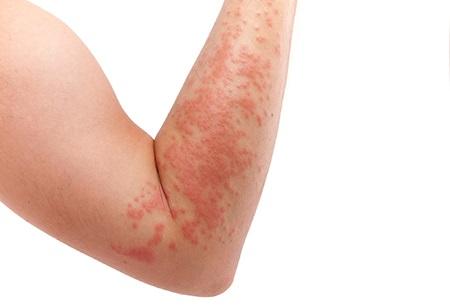Food allergies
Dr. Hsu says fresh fruits and vegetables tend to be more problematic for those with pollen allergies due to a condition called food-pollen syndrome, which is a cross-reaction between pollens, and certain fresh fruits and vegetables. She says cooking produce can destroy the heat-sensitive antigens, minimizing the risk of allergic reaction. Other foods that top the allergy list include:
- Milk and dairy products
- Eggs
- Peanuts
- Tree nuts
- Fish
- Shellfish
- Wheat
- Soy
Depending on the person and the allergen, consuming these foods can cause an allergic reaction, including hives. More severe cases may result in anaphylaxis, a life-threatening allergic reaction requiring medical attention.
What are environmental triggers for hives?
Arizona is an allergy hotspot thanks to its near-constant sunshine, mix of native and non-native plants and trees, and lack of freezing winters that has plants blooming throughout the year. Other causes include:
- Photosensitivity (a skin reaction to sunlight)
- Ice
- Hot showers
- Pressure on the skin from things like tight, restrictive clothing
- Pollution
- Different types of airborne allergens (dust or dry mold)
How do you treat hives?
Dr. Hsu says blood and skin tests may be necessary to determine what you’re allergic to and, in turn, what may be causing your hives. Generally speaking, hives alone aren’t dangerous, and they can usually be treated with over-the-counter antihistamines. However, if hives present as part of systemic allergic reaction, seek immediate medical attention. More severe cases of hives or those that are idiopathic require a second line of defense with prescription medications.
